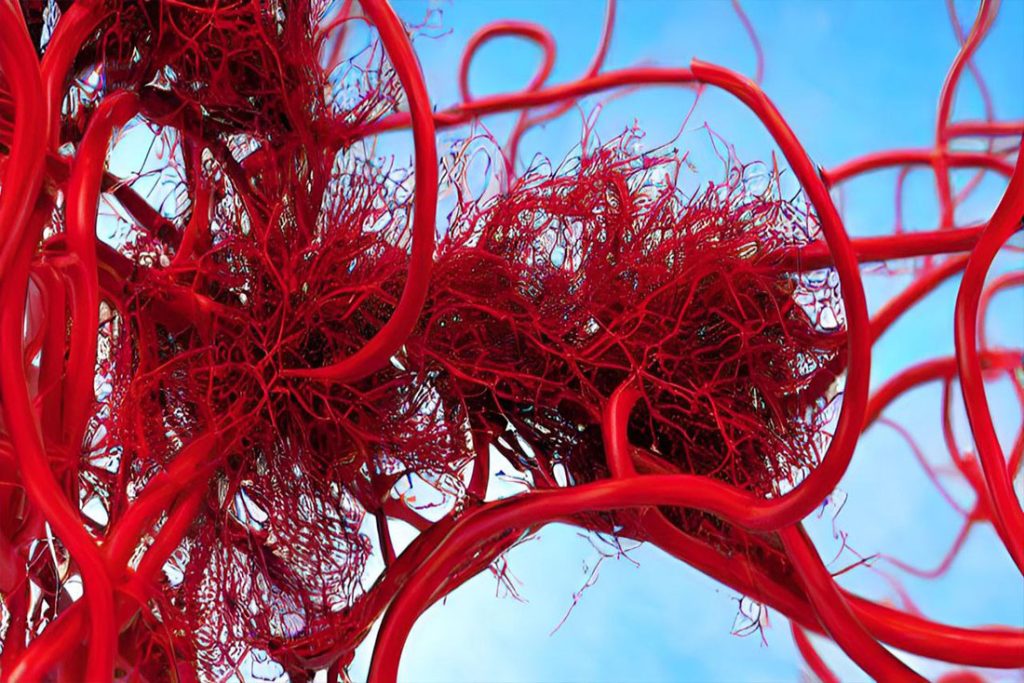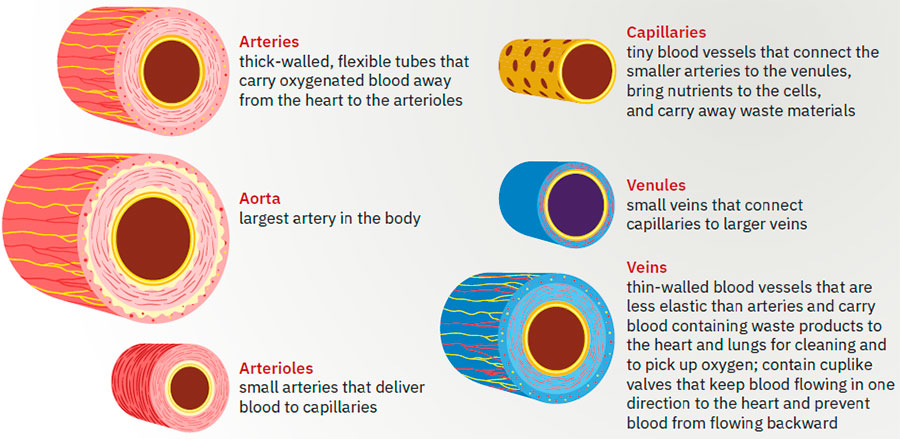The Anatomy of Blood Vessels: Its Importance to Cosmetologists
A detailed understanding of the human body’s circulatory system is not just confined to medical professionals. It is equally important for cosmetologists who aim to provide safe and efficient services to their clients. A critical component of this system, blood vessels, play a vital role in maintaining skin health and overall wellness. This article explores the structure and function of different types of blood vessels – arteries, arterioles, capillaries, venules, and veins – highlighting their importance in the field of cosmetology.

Blood Vessels
The Anatomy of Blood Vessels
Blood vessels, the conduits of life, are tube-like structures circulating blood throughout the body, delivering oxygen and nutrients while removing waste products. They come in five primary types, each with unique structures and roles.
Arteries: Arteries are thick-walled, flexible tubes that carry oxygen-rich blood away from the heart. These vessels, able to withstand the high pressure of blood pumped by the heart, are crucial for supplying oxygen and nutrients to body tissues.
Aorta: The aorta is the largest artery in the body. It originates from the heart’s left ventricle, arching downwards to distribute oxygenated blood to all systemic arteries, except those of the lungs.
Arterioles: Arterioles, small branches of arteries, play a crucial role in blood pressure regulation. They deliver blood to the capillaries, the smallest and most numerous of the blood vessels.

Capillaries: These tiny vessels connect arterioles to venules. Their thin walls allow for the exchange of oxygen, nutrients, and waste materials between the blood and surrounding tissues.
Venules: Venules are small veins that drain blood from capillaries into larger veins. They also play a role in immune responses as they facilitate the movement of white blood cells from the bloodstream into tissues.
Veins: Veins, less elastic and thinner-walled than arteries, transport deoxygenated blood and waste products from body tissues back to the heart and lungs. Their cup-like valves prevent backward flow, ensuring unidirectional circulation of blood towards the heart.
The Significance of Blood Vessels for Cosmetologists
A cosmetologist’s understanding of blood vessel anatomy contributes significantly to providing optimal skincare and beauty services. The skin’s health, radiance, and ability to heal and regenerate rely on the efficient functioning of the circulatory system.
Good blood flow ensures that skin cells receive essential nutrients and oxygen, promoting healthy cellular function and the production of collagen and elastin, vital proteins for skin firmness and elasticity. Furthermore, efficient circulation enables the removal of toxins and waste products, reducing inflammation and skin issues.
Understanding the structure and function of blood vessels can help cosmetologists assess skin health and identify potential circulatory problems. For example, dark circles under the eyes, varicose veins, or prolonged healing time might indicate circulatory issues.
A thorough understanding of the circulatory system, including the anatomy and physiology of blood vessels, equips cosmetologists with the knowledge to optimize their skincare services. It enhances their ability to recognize signs of potential underlying issues, allowing them to adapt treatments and give clients tailored advice to improve skin health and overall wellness. Indeed, the fusion of beauty and health sciences can lead to remarkable outcomes in the field of cosmetology.






